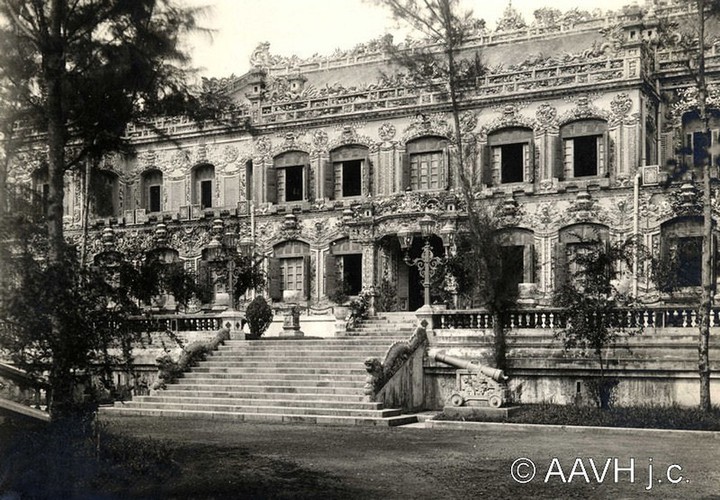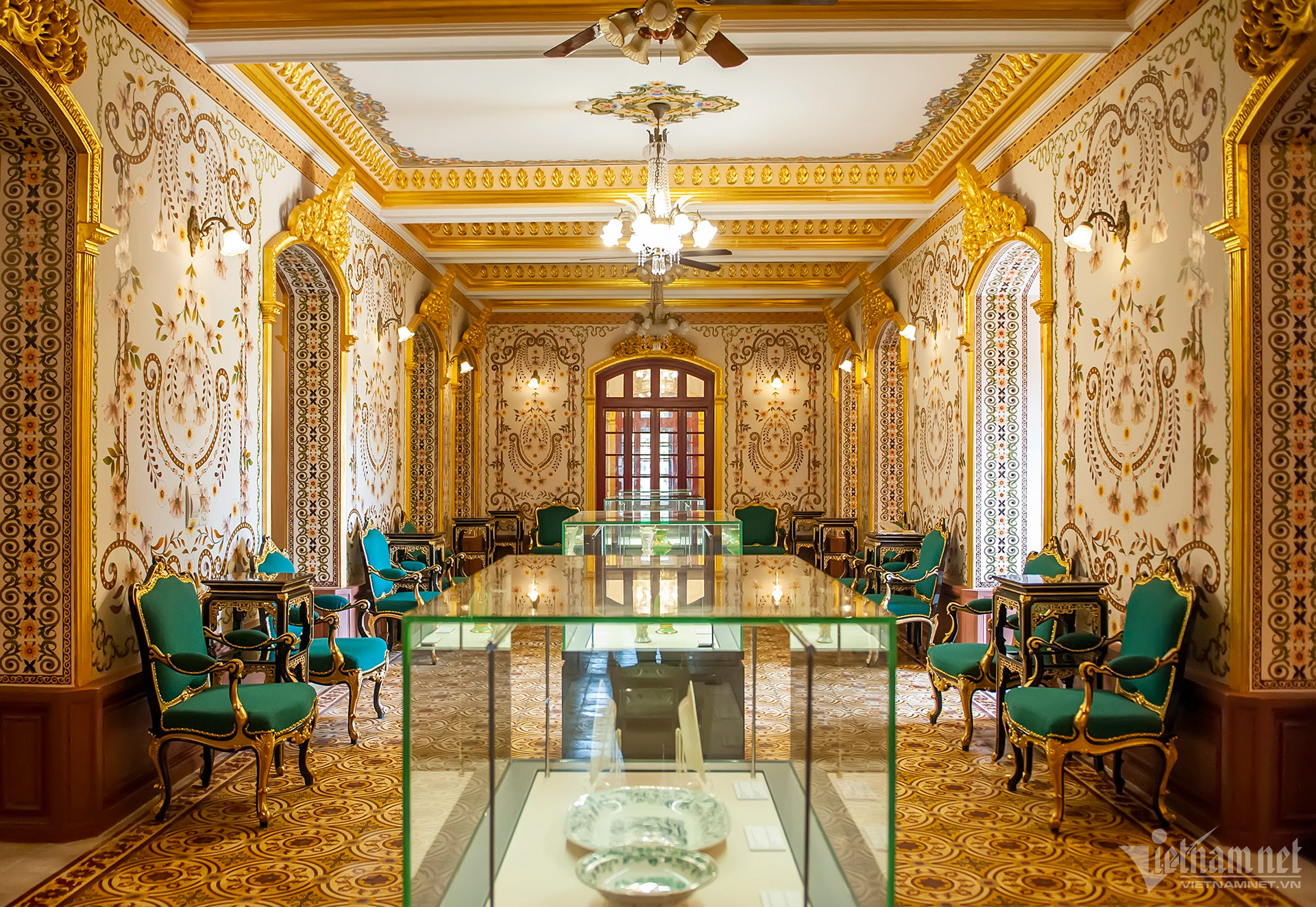Kien Trung Palace, once the grandest palace in Hue, has undergone a remarkable transformation after more than 72 years of lying in ruins. The restoration holds significant importance, adding a point of interest for visitors to the Imperial City in Hue.
History of Kien Trung Palace – Hue
Situated within the esteemed Forbidden City of the Hue Citadel, Kien Trung Palace stands as a testament to the architectural brilliance of the Nguyen Dynasty, contributing to the richness of Hue’s royal architecture.

The original facade of Kien Trung Palace. Photo: AAVH
While officially constructed in 1921, its history traces back almost 100 years. In 1827, King Minh Mang began creating the Minh Vien Pavilion. Recognized as the “Top Marvel,” it faced damage during King Tu Duc’s reign. A significant revival occurred in 1913 when King Duy Tan erected the Du Cuu Pavilion, which was later expanded and rebuilt in a modern classical style by King Khai Dinh, who renamed it Kien Trung Palace. It became the primary residence for the monarch within the royal complex.
Kien Trung Palace served as the residence and workplace of King Bao Dai, the last Nguyen dynasty king, and Queen Nam Phuong. After the August Revolution, it hosted the pivotal meeting between King Bao Dai and the Provisional Government Delegation to discuss abdication.

Following the First Indochina War, only the foundation of the structure remained.
Despite war devastation, the palace lay in ruins by 1947, with only its foundation remaining. This foundation later became the cornerstone for meticulous restoration efforts. On February 16, 2018, the project “Renovate, restore and embellish Kien Trung palace relics” began, with an investment exceeding 120 billion VND. After five years, the restoration was completed, and the palace opened to visitors in February 2024.
Restoration Challenges and Success
Kien Trung Palace’s restoration, managed by three Hue Imperial City Heritage Conservation Center directors, faced challenges, including the COVID-19 pandemic, financial constraints, procedural complexities, and technical issues.
This marks the first palace restoration in 30 years since Hue Imperial City’s recognition as a World Cultural Heritage. Adhering to international conventions and heritage preservation laws, the project aimed to renovate and restore the site with meticulous care.

Despite challenges, relentless efforts resulted in a splendid restoration, preserving the original design. Photo: Vietnamnet.
Over 3,800 square meters of renovation preserved the existing foundation structure, minimizing interventions. The palace, now adorned with a landscaped garden, dragon-themed stairwells, and a blend of French, Italian Renaissance, and Vietnamese architectural styles, features a logical and aesthetically pleasing design.

The cohesive design creates a harmonious and visually appealing architectural ensemble. Photo: Vietnamnet.
The two-story building is crafted in European style, seamlessly merging French and Italian Renaissance architectural elements with traditional Vietnamese design. On the main floor, you’ll find 13 porch doors: the central room boasts five doors, the two side rooms each contain three doors, and the corners extend outward with two additional doors on each side. The upper floor, serving as an attic, mirrors the main floor’s layout. Completing the structure is a tiled roof adorned with Vietnamese-style decorative railings.
A Majestic Attraction
The renovated Kien Trung Palace is now a majestic attraction, drawing tourists worldwide. In its initial three days of opening, it received 65,000 to 68,000 visits, including 12,000 international visitors.

During its brief existence from 1923 to 1946, Kien Trung Palace documented significant events involving the last two kings of the Nguyen dynasty. On November 6, 1925, King Khai Dinh took his last breath within the palace. Following King Khai Dinh’s passing, King Bao Dai and Queen Nam Phuong later moved to live in the palace. It was at Kien Trung Palace that Queen Nam Phuong gave birth to the Crown Prince.
With its historical significance and a blend of Eastern and Western architectural styles, Kien Trung Palace is an unmissable destination for those who are affectionate for Hue.






 17 Years of Experience & Expertise
17 Years of Experience & Expertise